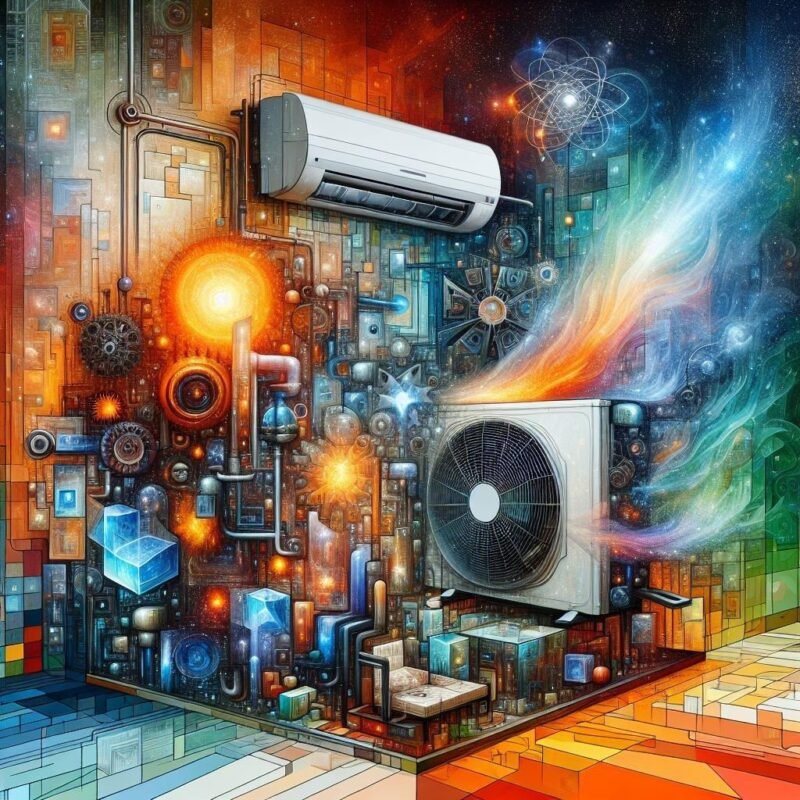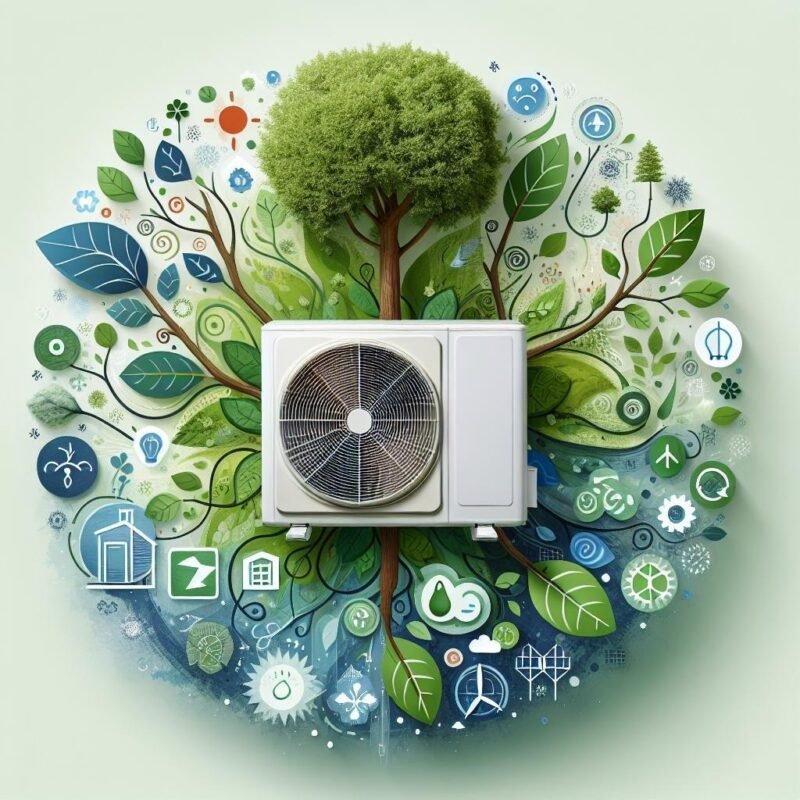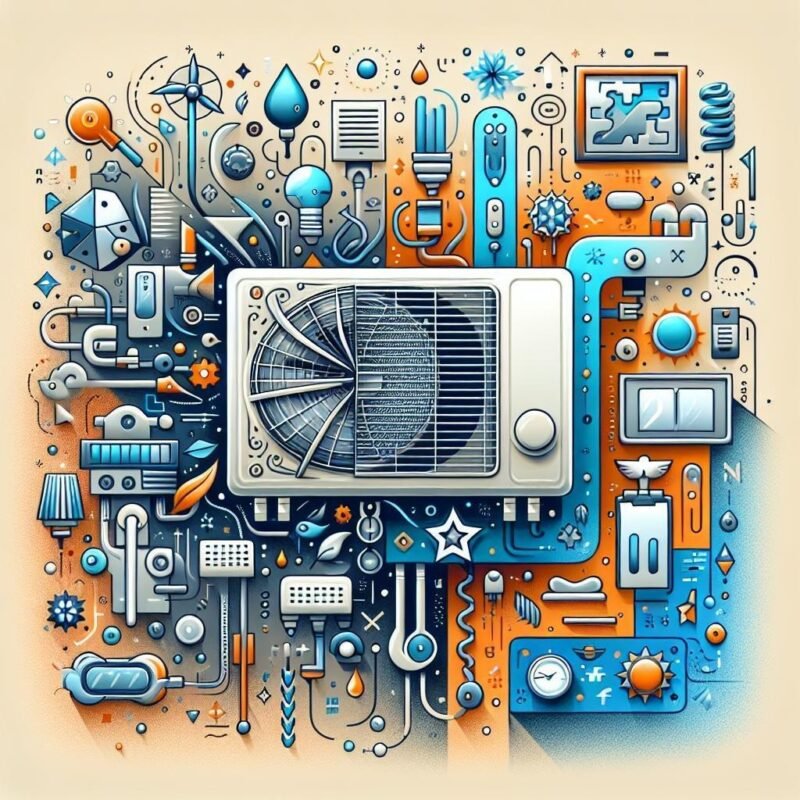Are there any government incentives for installing a mini split AC system?

As summer temperatures soar and energy bills follow suit, homeowners across the country are getting creative with their cooling solutions. Enter the mini split AC system – a savvy choice that’s catching the attention of not just comfort-seekers, but also Uncle Sam himself. If you’ve been eyeing these sleek, efficient cooling units but feeling the pinch in your wallet, here’s some refreshing news: your government might just help foot the bill. From tax credits to rebates and local incentives, there’s a cool breeze of savings blowing through the HVAC world, and we’re about to catch it together.
Federal Tax Credits and Rebates: Your Gateway to Mini Split Savings
Uncle Sam wants to help you save money while staying cool! The federal government offers substantial incentives through the Energy Efficient Home Improvement Credit, which can put up to 30% of your mini split installation costs back in your pocket. This tax credit, part of the Inflation Reduction Act, applies to qualified heat pump systems installed between 2023 and 2032, making it the perfect time to upgrade your home’s comfort system.
Beyond federal incentives, a treasure trove of savings awaits through various programs:
- State-specific rebate programs offering up to $8,000 in additional savings
- Utility company incentives that can slash your initial costs
- Local energy efficiency programs with instant rebates
- Special financing options through certified contractors
| Incentive Type | Maximum Benefit |
|---|---|
| Federal Tax Credit | Up to $2,000 |
| State Rebates | Up to $8,000 |
| Utility Programs | $500-$1,500 |
State-Level Programs That Make Your Cool Dreams Come True
If you live in the US, your state might be sitting on a goldmine of HVAC incentives that could turn your mini-split AC dreams into reality. From sunny California to frosty Maine, state governments are rolling out impressive rebate programs and tax credits specifically designed for energy-efficient cooling solutions. For instance, Massachusetts residents can tap into the Mass Save program, which offers up to $10,000 in rebates, while New York’s NYS Clean Heat program provides substantial incentives for converting to electric heating and cooling systems.
Beyond the obvious financial perks, many states have partnered with local utility companies to sweeten the deal with additional savings opportunities. Here’s what’s typically available:
- Direct cash rebates on Energy Star certified mini splits
- Zero-interest financing programs for installation costs
- Special incentives for low-income households
- Bonus rebates for whole-home energy upgrades
| State | Max Rebate | Special Features |
|---|---|---|
| California | $3,000 | Solar combo bonus |
| Maine | $1,200 | Winter efficiency bonus |
Local Utility Companies: Hidden Gems of HVAC Support
Did you know that your neighborhood utility providers can be your secret weapon in scoring incredible HVAC deals? Many energy companies across the U.S. offer substantial rebates and cost-saving programs specifically for mini-split installations. These money-saving opportunities often fly under the radar, but they can significantly reduce your initial investment while helping create a more energy-efficient community.
Before making your purchase, contact your local utility company and inquire about their current incentive programs. They typically offer:
- Direct installation rebates ranging from $300 to $1,500
- Zero-interest financing options for qualified customers
- Free energy audits to maximize system efficiency
- Seasonal promotional discounts
- Bundle deals when combining with other energy-efficient upgrades
| Common Utility Offers | Typical Savings |
|---|---|
| Installation Rebate | $500-800 |
| Energy Audit Credit | $250 |
| Bundle Savings | 10-15% |
Energy Star Benefits and Special Financing Options
Looking to save big on your mini split installation? The Energy Star certification program offers substantial rebates and tax credits that can significantly reduce your upfront costs. These energy-efficient systems not only qualify for federal incentives but may also be eligible for state and local utility company rebates, potentially saving you thousands of dollars. Many certified mini splits exceed standard efficiency ratings by 30%, translating into lower monthly energy bills and a smaller carbon footprint for your home.
Financial institutions and HVAC contractors often provide flexible payment solutions to make your mini split dream a reality. From zero-interest financing to low monthly payments spread across several years, you’ll find options that fit your budget perfectly. Some noteworthy programs include:
- FHA PowerSaver loans with competitive rates
- Property Assessed Clean Energy (PACE) financing
- Manufacturer-sponsored payment plans
- Home equity line of credit options
| Financing Type | Term Length | Typical APR |
|---|---|---|
| Same as Cash | 12-18 months | 0% |
| Extended Plan | 36-60 months | 4.99-7.99% |
Q&A
Q&A: Are There Any Government Incentives for Installing a Mini Split AC System?
Q1: What exactly is a mini split AC system?
A1: Great question! A mini split AC system is a highly efficient air conditioning and heating solution that consists of an outdoor compressor and one or more indoor air-handling units. Unlike traditional HVAC systems, mini splits do not require ductwork, making them a flexible option for those looking to cool or heat specific areas of their home.
Q2: Are there really government incentives for installing a mini split AC system?
A2: Yes, indeed! Government incentives for energy-efficient installations are more common than you might think! Depending on where you live, you could benefit from federal tax credits, state rebates, or local utility incentives aimed at encouraging homeowners to opt for energy-efficient systems like mini splits.
Q3: What types of incentives can I expect?
A3: There are a variety of incentives available! At the federal level, energy efficiency tax credits can allow you to deduct a percentage of your installation costs when filing your taxes. State programs often feature rebates or low-interest financing options, while local utility companies may offer additional cash-back incentives for energy-efficient upgrades. Be sure to check your local regulations for the most up-to-date offerings!
Q4: How can I find out what incentives are available in my area?
A4: Finding out about incentives is easier than you might think! A quick visit to the Database of State Incentives for Renewables & Efficiency (DSIRE) can provide a treasure trove of information tailored to your state. Additionally, checking with your local utility company or state energy office can point you in the right direction.
Q5: Are there specific efficiency ratings I should look out for?
A5: Absolutely! When shopping for a mini split AC system, you’ll want to look for units with a high Seasonal Energy Efficiency Ratio (SEER) and Energy Efficiency Ratio (EER). These ratings indicate the unit’s energy efficiency. Systems with at least 16 SEER are often eligible for incentives, but check your specific program requirements too!
Q6: How do I apply for these incentives?
A6: The application process can vary depending on the incentive program. Usually, you’ll need to fill out an application form, provide proof of purchase (like your receipt), and sometimes submit additional documentation like installation records. It’s a good idea to keep all receipts and relevant paperwork handy for a smooth process.
Q7: Is it worth going through the hassle of applying for incentives?
A7: Absolutely, yes! The potential savings can be significant. Many homeowners find that the financial benefits of incentives greatly offset installation costs, making it a worthwhile endeavor. Plus, you’re contributing to a more energy-efficient environment while enjoying comfortable living spaces!
Q8: Any tips on choosing the right mini split AC system?
A8: Keep it simple! Start by assessing the size of the space you need to cool or heat, and look for a mini split that offers the appropriate BTU (British Thermal Unit) rating. Consulting with a licensed HVAC technician can also help ensure that you select a system that meets your needs and is eligible for the available incentives.
Q9: What are the long-term benefits of a mini split AC system apart from the incentives?
A9: In addition to the initial savings from government incentives, mini splits can lower your energy consumption, leading to lower utility bills over time. They also provide flexible zoning options, allowing for customized comfort in different areas of your home. Talk about a win-win!
Q10: How can I start the process of getting a mini split AC system installed?
A10: First, do a bit of research! Look into local contractors who specialize in mini split installations. Request quotes and ask about their experience with obtaining incentives. Once you’ve found the right fit, get ready to enjoy a cool, comfortable home while saving money through those valuable government incentives. Happy cooling!
Insights and Conclusions
As we wrap up our exploration of government incentives for installing mini split AC systems, it’s clear that cooling off during those hot summer months can come with some pretty sweet perks! Not only can you enjoy a more comfortable living space, but you might also find your wallet feeling a little lighter thanks to various rebates, tax credits, and financing options that some states and localities offer.
Whether you’re motivated by energy efficiency, a desire to reduce your carbon footprint, or simply the comfort of a perfectly cooled home, it’s worth doing a bit of homework to uncover what’s available in your area. So, as you embark on your journey to a more climate-controlled sanctuary, don’t forget to check out those government incentives—they could make your investment in a mini split AC system not only practical but also financially savvy!
Thanks for joining us on this cool quest, and here’s to breezy days ahead! Stay comfortable, informed, and ready to chill!






















